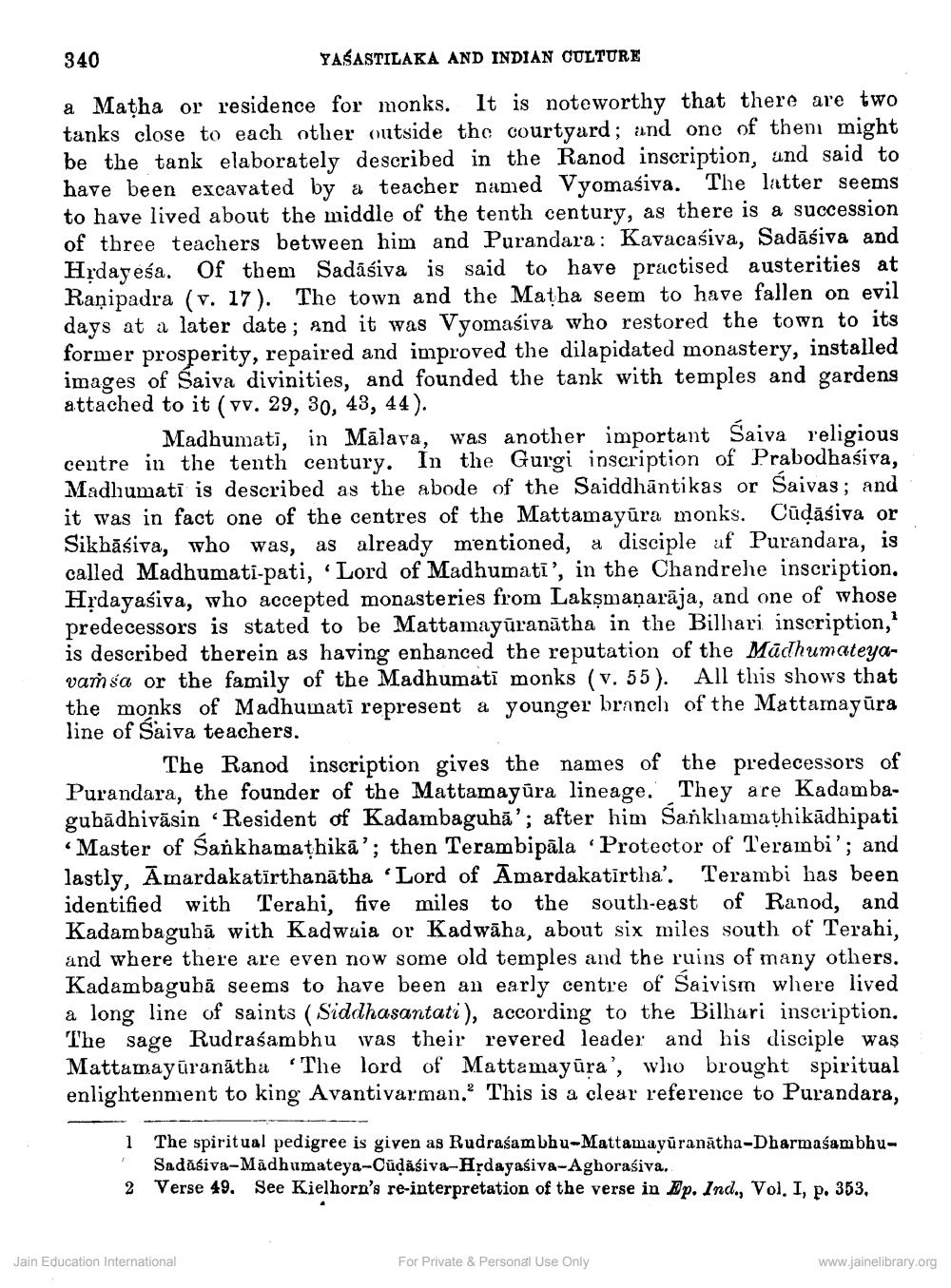________________
340
YAŠASTILAKA AND INDIAN CULTURE
a Matha or residence for monks. It is noteworthy that there are two tanks close to each other outside the courtyard; and one of them might
ank elaborately described in the Ranod inscription, and said to have been excavated by a teacher named Vyomasiva. The latter seems to have lived about the middle of the tenth century, as there is a succession of three teachers between him and Purandara: Kavacasiva, Sadāsiva and Hrday eśa. Of them Sadāśiva is said to have practised austerities at Ranipadra (v. 17). The town and the Matha seem to have fallen on evil days at a later date; and it was Vyomaćiva who restored the town to its former prosperity, repaired and improved the dilapidated monastery, installed images of Saiva divinities, and founded the tank with temples and gardens attached to it (vv. 29, 30, 43, 44).
Madhumati, in Málara, was another important saiva religious centre in the tenth century. In the Gurgi inscription of Prabodhas Madhumati is described as the abode of the Saiddhāntikas or Saivas; and it was in fact one of the centres of the Mattamayūra monks. Cūdāśiva or Sikhāśiva, who was, as already mentioned, a disciple af Purandara, is called Madhumati-pati, Lord of Madhumatī', in the Chandrehe inscription Hrdayasiva, who accepted monasteries from Lakşmaņarāja, and one of whose predecessors is stated to be Mattamayūranātha in the Bilhari inscription, is described therein as having enhanced the reputation of the Mâdhumateyavam sa or the family of the Madhumati monks (v. 55). All this shows that the monks of Madhumati represent a younger branch of the Mattamayūra line of Saiva teachers.
The Ranod inscription gives the names of the predecessors of Purandara, the founder of the Mattamayūra lineage. They are Kadambaguhādhivāsin Resident of Kadambaguhā'; after him Sankhamathikādhipati Master of Sankhamathika'; then Terambipāla Protector of Terambi'; and lastly, Āmardakatirthanātha 'Lord of Amardakatirtha'. Terambi has been identified with Terahi, five miles to the south-east of Ranod, and Kadambaguhā with Kadwaia or Kadwāha, about six miles south of Terahi, and where there are even now some old temples and the ruins of many others. Kadambagubā seems to have been an early centre of Saivism where lived a long line of saints (Siddhasantati), according to the Bilhari inscription. The sage Rudraśambhu was their revered leader and his disciple was Mattamayüranātha 'The lord of Mattamayura', who brought spiritual enlightenment to king Avantivarman. This is a clear reference to Purandara,
1
The spiritual pedigree is given as Rudraśam bhu-Mattamayūranātha-DharmasambhuSadăśiva-Mädhumateya-Cüdāśiva-Hrdayaśiva-Aghoraśiva. Verse 49. See Kielhorn's re-interpretation of the verse in Ep. Ind., Vol. I, p. 353,
2
Jain Education International
For Private & Personal Use Only
www.jainelibrary.org




